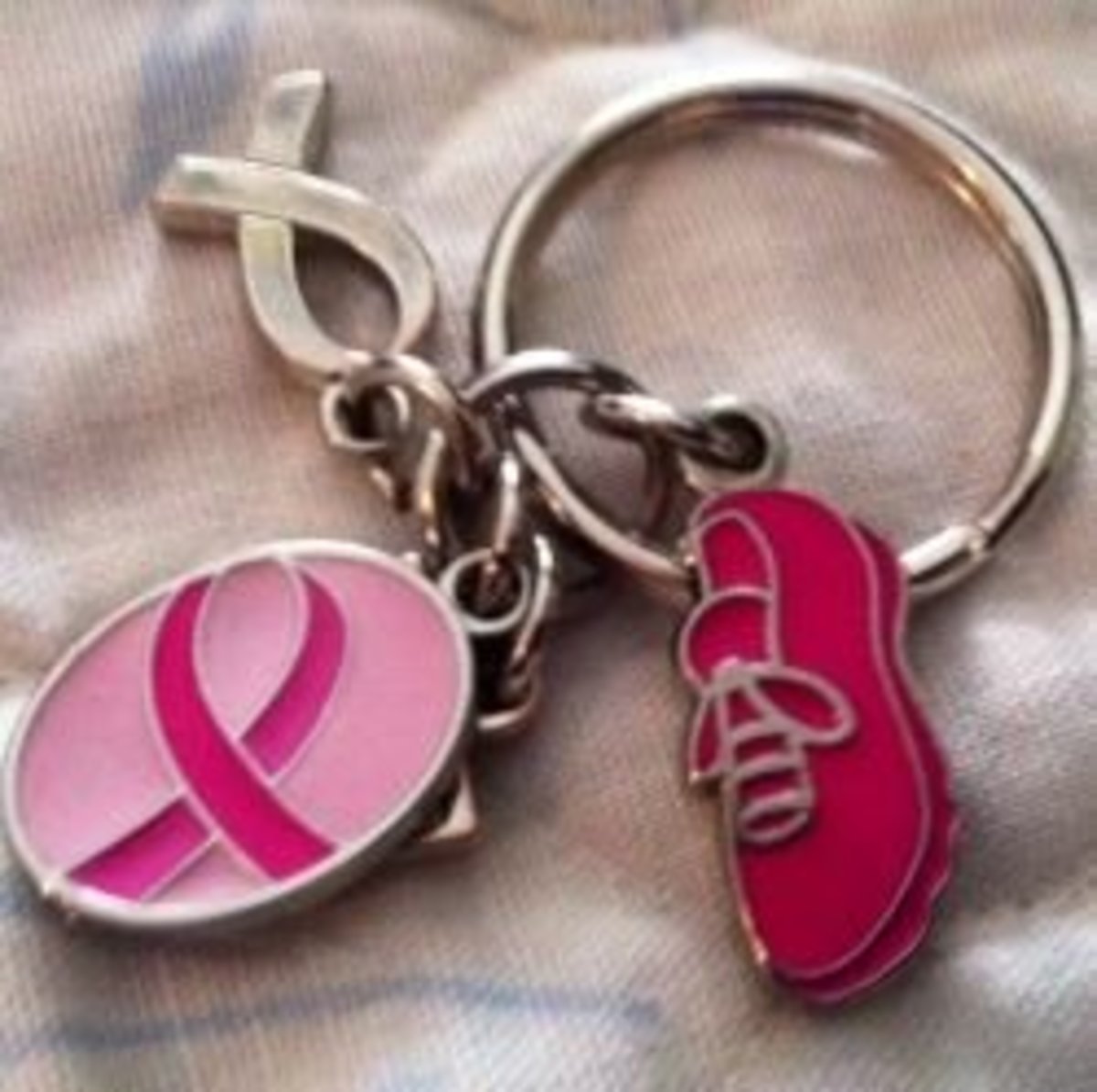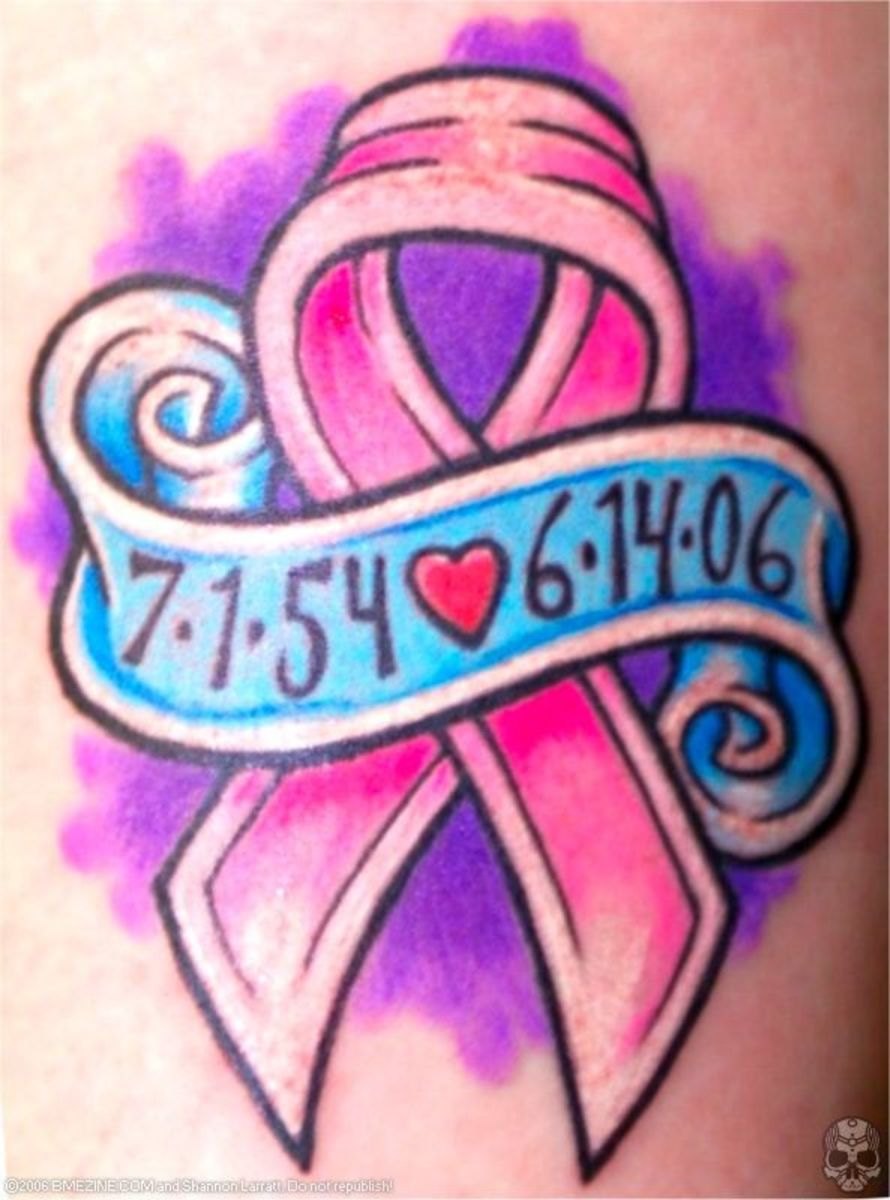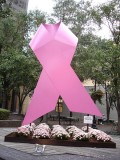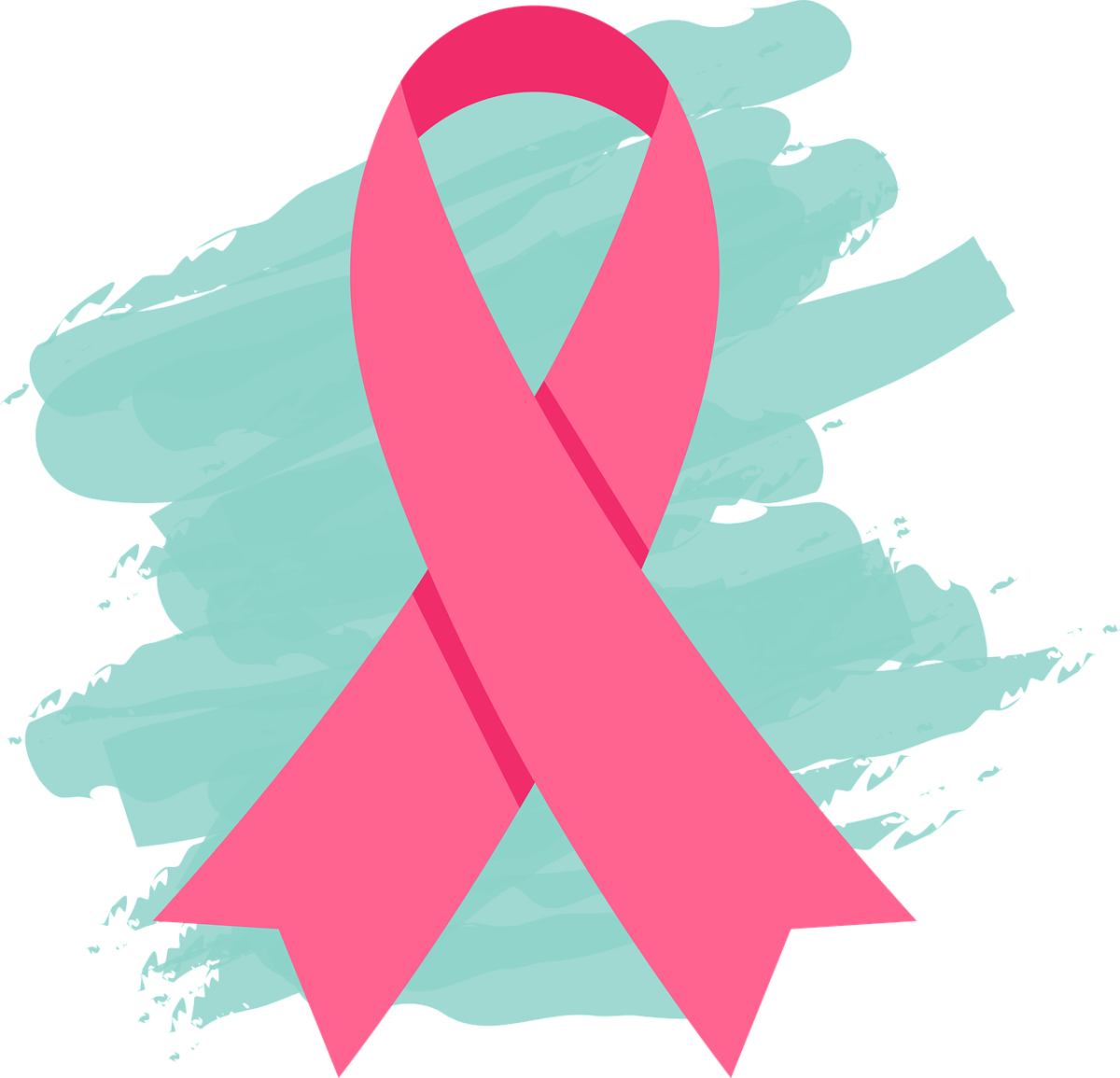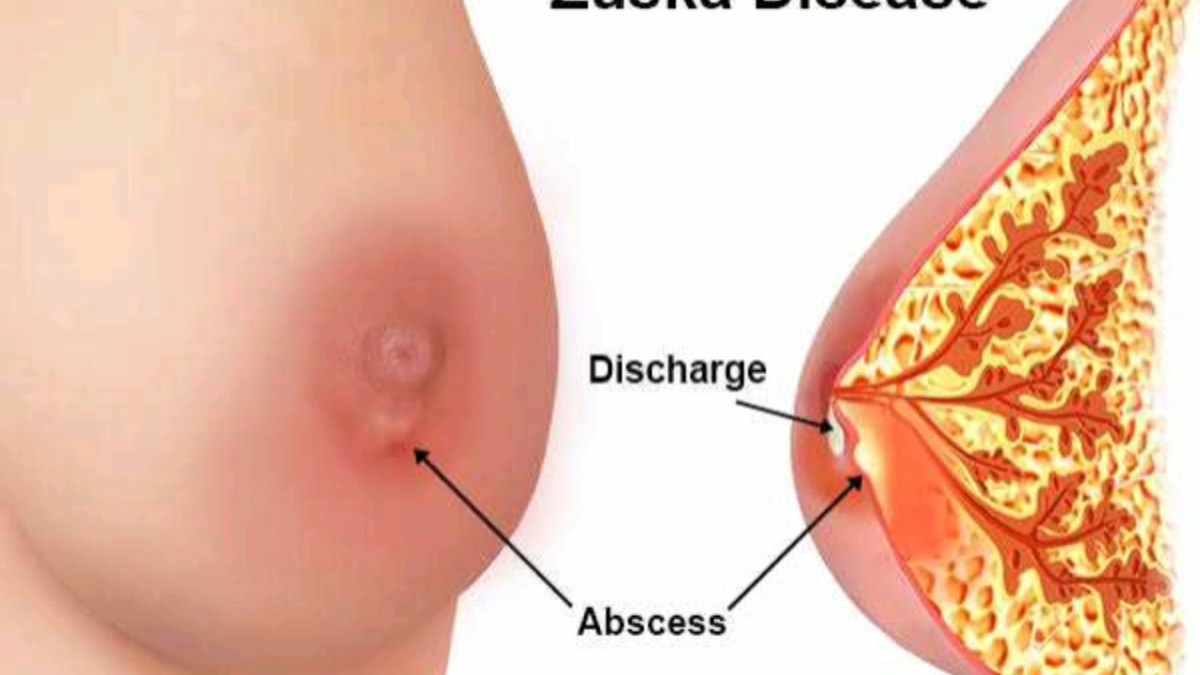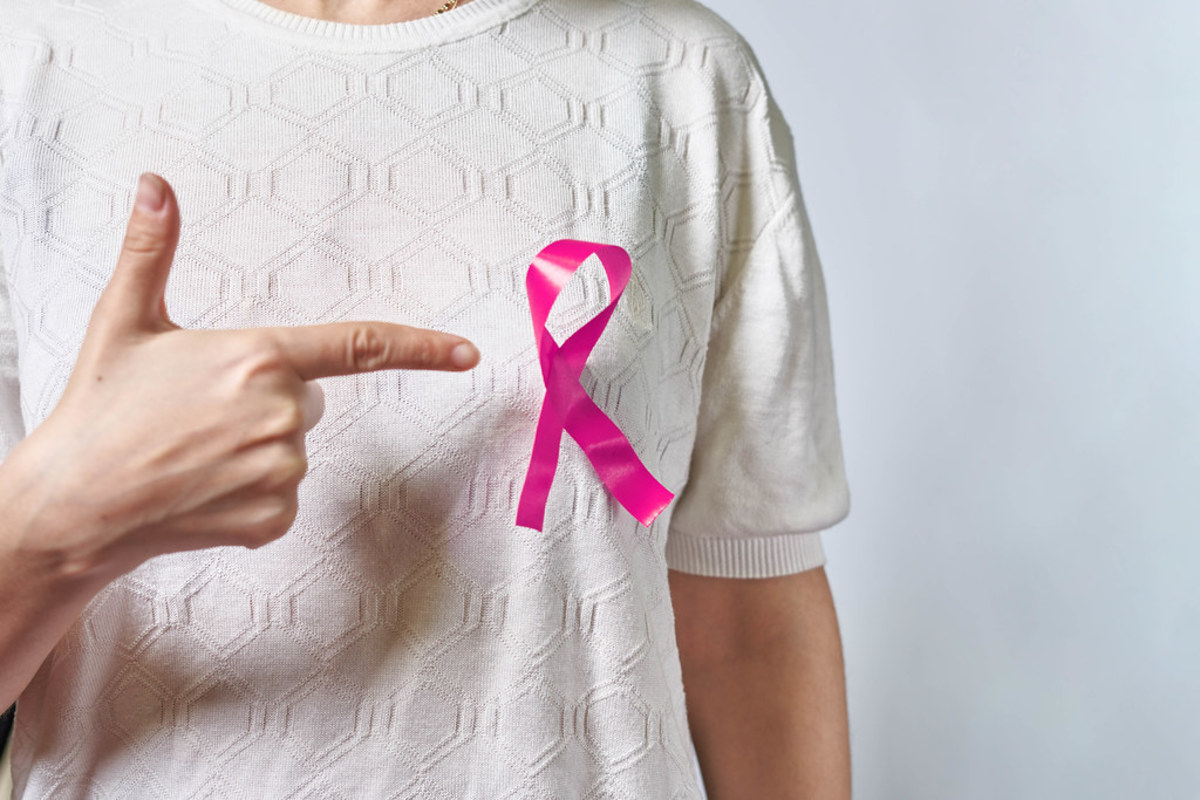Breast Cancer: Genetics, Causes, Treatments
What is Breast Cancer?
My mother is a breast cancer survivor, she was lucky to discover it on time and to receive the right treatment that freed her from this terrible disease. I guess not everyone has that chance because breast cancer has different stages and it not only depends on the time it is discovered, but also on the treatment receive and in how strong you are to resist that treatment. Thinking of her and of all those women who won or lost that battle I decided to write this hub.
The term “breast cancer”refers to a malignant tumor that has developed from cells in the breast. Usually breast cancer either begins in the cells of the lobules, which are the milk-producing glands, or the ducts. Less commonly, breast cancer can begin in the stromal tissues, which include the fatty and fibrous connective tissues of the breast.
Over time, cancer cells can invade nearby healthy breast tissue and make their way into the underarm lymph nodes, small organs that filter out foreign substances in the body. If cancer cells get into the lymph nodes, they then have a pathway into other parts of the body.
About 90% of breast cancers are due to genetic abnormalities that happen as a result of the aging process an only a 5 to 10% is caused due to a genetic abnormalities inherited from your mother or father.
Risks of getting breast cancer:
There are some factors that could increase the risk of getting breast cancer:
- Those you can control such as:
Weight. Being overweight is associated with increased risk of breast cancer, especially for women after menopause. Fat tissue is the body’s main source of estrogen after menopause, when the ovaries stop producing the hormone. Having more fat tissue means having higher estrogen levels, which can increase breast cancer risk.
Diet. Diet is a suspected risk factor for many types of cancer, including breast cancer. It’s a good idea to restrict sources of red meat and other animal fats (including dairy fat in cheese, milk, and ice cream), because they may contain hormones, other growth factors, antibiotics, and pesticides.
Exercise. Evidence is growing that exercise can reduce breast cancer risk. The American Cancer Society recommends engaging in 45-60 minutes of physical exercise 5 or more days a week.
Alcohol consumption. Studies have shown that alcohol can limit your liver’s ability to control blood levels of the hormone estrogen, which in turn can increase risk.
Smoking. Smoking is associated with a small increase in breast cancer risk. Of course is always associated with lungs cancer.
Recent oral contraceptive use. Using oral contraceptives (birth control pills) appears to slightly increase a woman’s risk for breast cancer, but only for a limited period of time. Women who stopped using oral contraceptives more than 10 years ago do not appear to have any increased breast cancer risk.
- Those you can´t control such as:
Gender. Being a woman is the most significant risk factor for developing breast cancer. Although men can get breast cancer too, women’s breast cells are constantly changing and growing, because the activity of the female hormones estrogen and progesterone.
Age. Simply growing older is the second biggest risk factor for breast cancer.
Family history of breast cancer. If you have a first-degree relative (mother, daughter, sister) who has had breast cancer, or you have multiple relatives affected by breast or ovarian cancer, you could be at higher risk of getting breast cancer.
Personal history of breast cancer.If you have already been diagnosed with breast cancer, you are in risk of developing it again, you must go to your periodical controls until your doctor is sure you are not in risk.
Radiation therapy to the chest. Having radiation therapy to the chest area as a child or young adult as treatment for another cancer significantly increases breast cancer risk.
Exposure to estrogen. Because the female hormone estrogen stimulates breast cell growth, exposure to estrogen over long periods of time, without any breaks, can increase the risk of breast cancer.
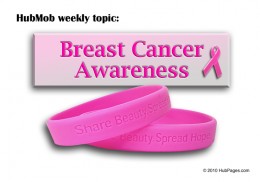
Symptoms and treatments
Symptoms:
According to the American Cancer Society, any of the following unusual changes in the breast can be a symptom of breast cancer:
- swelling of all or part of the breast
- skin irritation or dimpling
- breast pain
- redness, scaliness, or thickening of the nipple or the breast skin
- a discharge other than breast milk
- a lump in the underarm area
These changes also can be signs of less serious conditions that are not cancerous, such as an infection or a cyst. It’s important to get any breast changes checked out your doctor.
Treatments:
After breast cancer is detected, the most important thing is to talk to our doctor about all the possible treatments and also about the side effects. Talking about our fears is also important in order to receive all the information that could at least give us some calm and help relief the stress of going through this terrible disease.
First we have to understand that there are different types of cancer, caused by different kinds of cells therefore they may need different treatments according also to the stage of the cancer. Some of the treatments are listed below:
- Surgery: is usually the first line of attack against breast cancer. The doctor may explain the reasons of choosing the right surgery depending on the size, location and risk. These are some of the most common breast cancer surgeries : Masectomy (the removal of all of the breast tissue), Lumpectomy (known as breast-conserving surgery, is the removal of only the tumor and a small amount of surrounding tissue)
- Radiation therapy: also called radiotherapy, is a highly effective way to destroy cancer cells in the breast that may stick around after surgery. Radiation can reduce the risk of breast cancer recurrence by about 70%. Is relatively easy to tolerate and its side effects are limited to the treated area.
-
Chemotherapy: this treatment uses medicine to weaken and destroy cancer cells in the body, including cells at the original cancer site and any cancer cells that may have spread to another part of the body. This is a systemic therapy that affects the whole body by going through the bloodstream. In some cases, chemotherapy is given before surgery to shrink the cancer.
In some cases the patient may receive a combination of treatments along with some hormonal therapy.
The breast cancer awareness month
Breast Cancer Awareness Month was created in 1985 (this year we are celebrating the 25 anniversary) as an effort between the American Academy of Family Physicians and AstraZeneca Healthcare Foundation and CancerCare, Inc., and various sponsors. Today it has grown to include a partnership of national public service organizations, government agencies, and professional medical associations that work together to raise awareness of breast cancer.
Since its inception, the National Breast Cancer Awareness Month (NBCAM) organization has been vigorously promoting educational events and programs to encourage and empower women to take control of their own breast health by practicing regular self-breast examinations, getting mammograms as recommended, scheduling regular visits with their physician for breast care, following any prescribed treatment, and learning as much as they can about breast cancer and breast health.
Some of the ways Breast Cancer Awareness Month is recognized and celebrated is through community events such as walk-a-thons, including the Avon Walk for Breast Cancer and the Komen Race for the Cure. In Australia, the National Breast Cancer Foundation holds Pink Ribbon Breakfasts in various locations, and a Global Breast Cancer Conference is being held in Seoul, Korea October 8 through 10.
The wearing of ribbons as a sign of awareness is believed to have begun during the Iranian hostage crisis in 1979, when yellow ribbons were used. The pink ribbon that has become the worldwide symbol of breast cancer and Breast Cancer Awareness Month was first used in the 1990s, which was a time when wearing ribbons was becoming a growing trend. The Susan G. Komen Foundation handed out pink ribbons in 1991 during its New York City race for breast cancer survivors.
The pink ribbon for breast cancer was chosen reportedly because it is a color of health and it represents femininity. (A blue ribbon is the symbol for men with breast cancer.) Evelyn Lauder, Senior Corporate Vice President of the Estee Lauder Companies, established The Breast Cancer Research Foundation in 1993 and established the pink ribbon as its symbol.
SOURCES:
The Breast Cancer Research Foundation
National Breast Cancer Awareness Month organization
Susan G. Komen For the Cure


